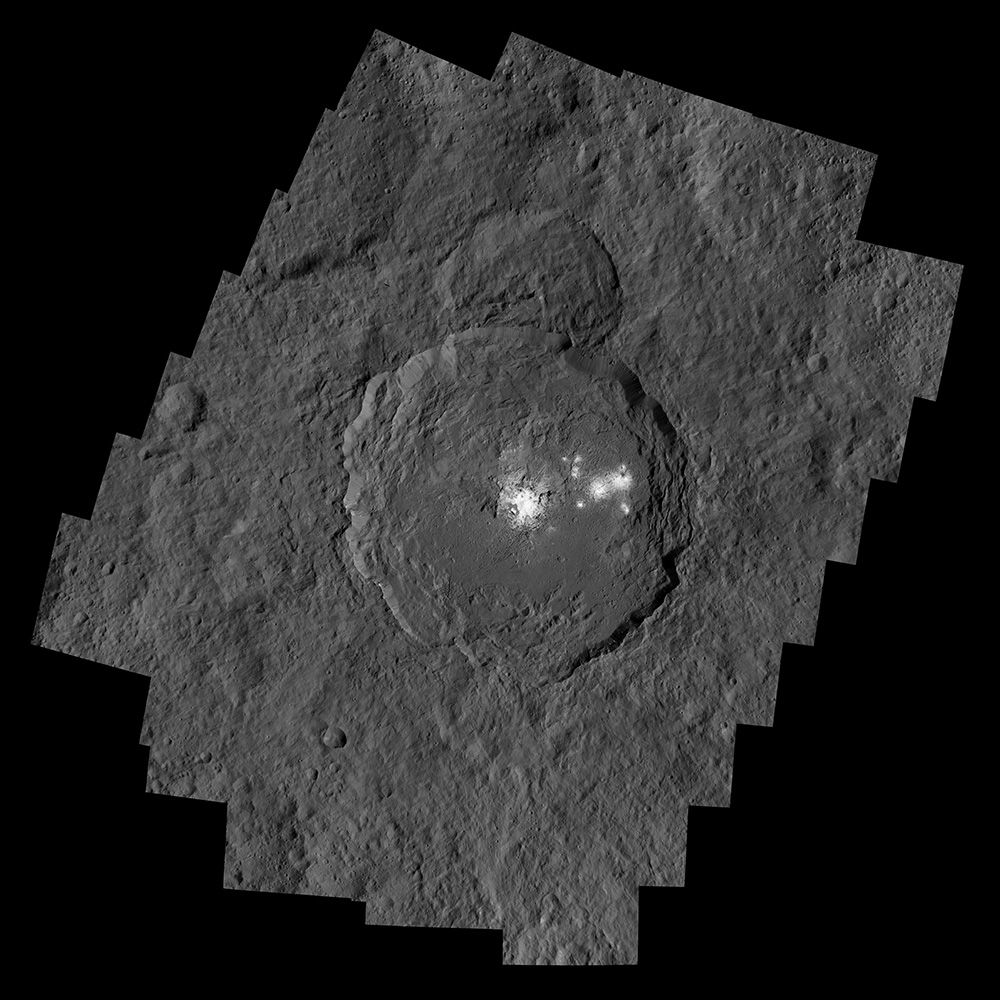New NASA Images Shed Light on Ceres’ Bright Spots
Yet the dwarf planet serves up fresh mysteries
/https://tf-cmsv2-smithsonianmag-media.s3.amazonaws.com/filer/12/81/128184a7-0f8f-48e5-ac2c-aae23b2128b2/occatorcrater.jpg)
For months, scientists have been puzzled by mysterious bright spots dotting the surface of Ceres, a dwarf planet drifting in the asteroid belt. Now, new images snapped by NASA’s Dawn spacecraft show the most detailed view yet of the largest of these odd features, Occator Crater.
In a presentation at the Lunar and Planetary Science Conference yesterday, NASA scientists showed off the images taken just 240 feet above Ceres’ surface that highlight several different kinds of landforms that make up the bright spot, including a shiny dome covered by cracks in the center of a smooth pit, Loren Grush reports for The Verge.
"Before Dawn began its intensive observations of Ceres last year, Occator Crater looked to be one large bright area," planetary scientist Ralf Jaumann, who is a Dawn co-investigator, says in a statement. "Now, with the latest close views, we can see complex features that provide new mysteries to investigate."
Recent studies have shown that the Occator Crater and the hundreds of other bright spots dotting Ceres’ surface are most likely made of a reflective, salty substance called hexahydrite that are constantly shifting and reforming. The new images of the crater appear to support that theory, Jaumann explains, as the cracks crisscrossing the dome suggests relatively recent geologic activity, Jamie Condliffe reports for Gizmodo.

While NASA scientists are still searching for clues to Ceres’ past, some suggest that the planet was once a waterworld, the evaporation of which previous research suggests led to these piles of salt. Recent studies theorize that an ancient ocean may have lurked under Ceres’ surface. But it didn't necessarily remain completely covered as asteroids pummeled the now pockmarked surface. These exposed spots of water-ice would have then been heated by the sun, slowly evaporating to leave the sparkly piles of hexahydrite behind, Nadia Drake writes for National Geographic.
Although this could explain how the hundreds of bright spots were created, many other mysteries still shroud the surface of the dwarf planet. For one, though the tiny pockmarks cover the orb, none are particularly large.
At roughly 57 miles across and 2.5 miles deep, the large Occator Crater isn't nothing. Even so, the dwarf planet is positioned in the asteroid belt and scientists have identified much larger craters on other objects, meaning that Ceres should be marked with enormous craters hundreds of miles across. Yet, these giant craters are nowhere to be seen—a mystery that scientists are still trying to answer, Drake writes.
“We must think that those craters formed, and then they got erased,” NASA researcher Simone Marchi tells Drake. “The question is, how can you erase all those large craters?”
While scientists still need more research to answer this question, one possibility is that Ceres is still geologically active. If so, it's possible that the dwarf planet could still be erupting water into space, which could account for the signs of recent activity and the missing craters as its surface shifts and reforms, Drake reports.
But for the time being, Ceres' origins remain elusive.